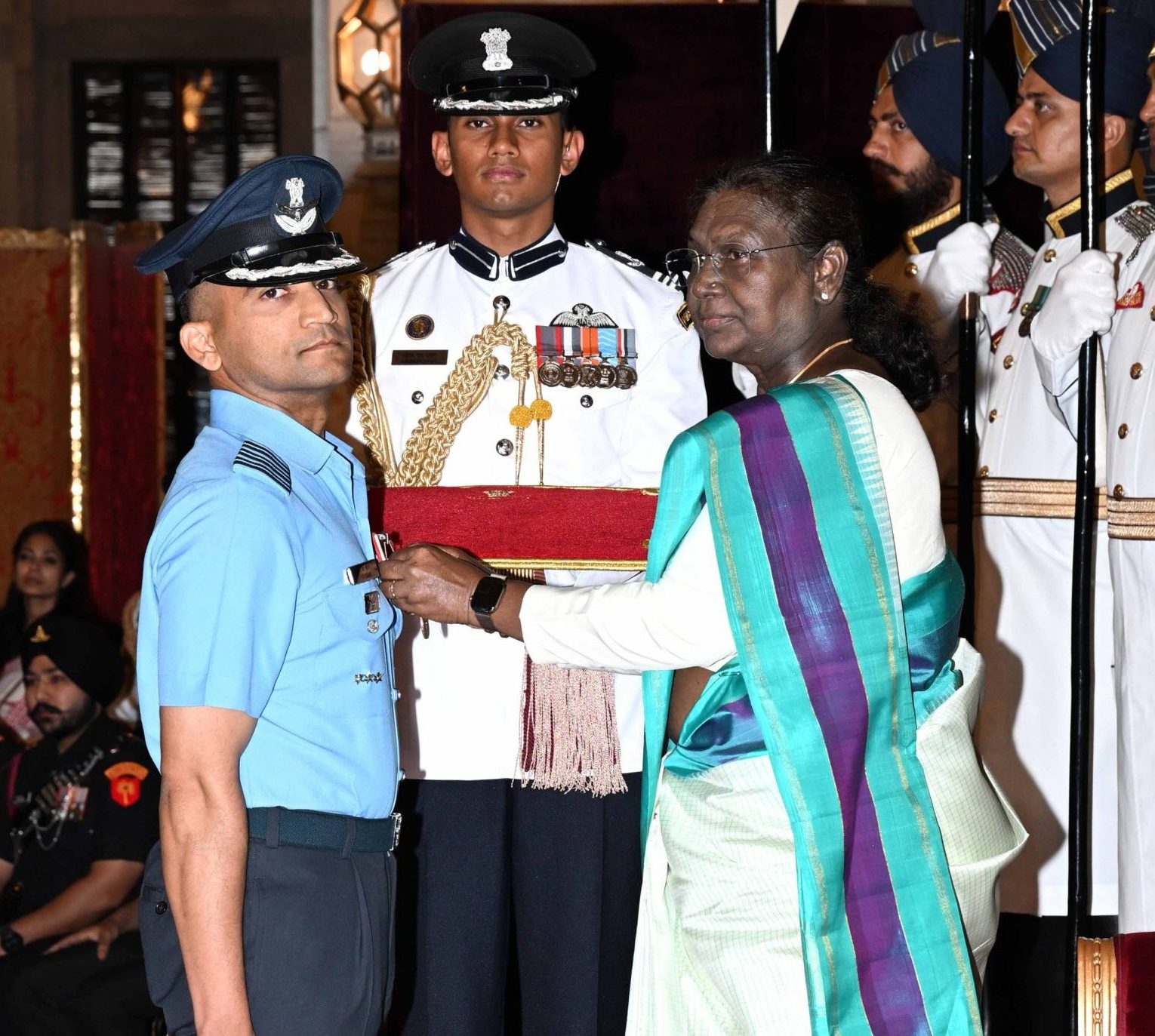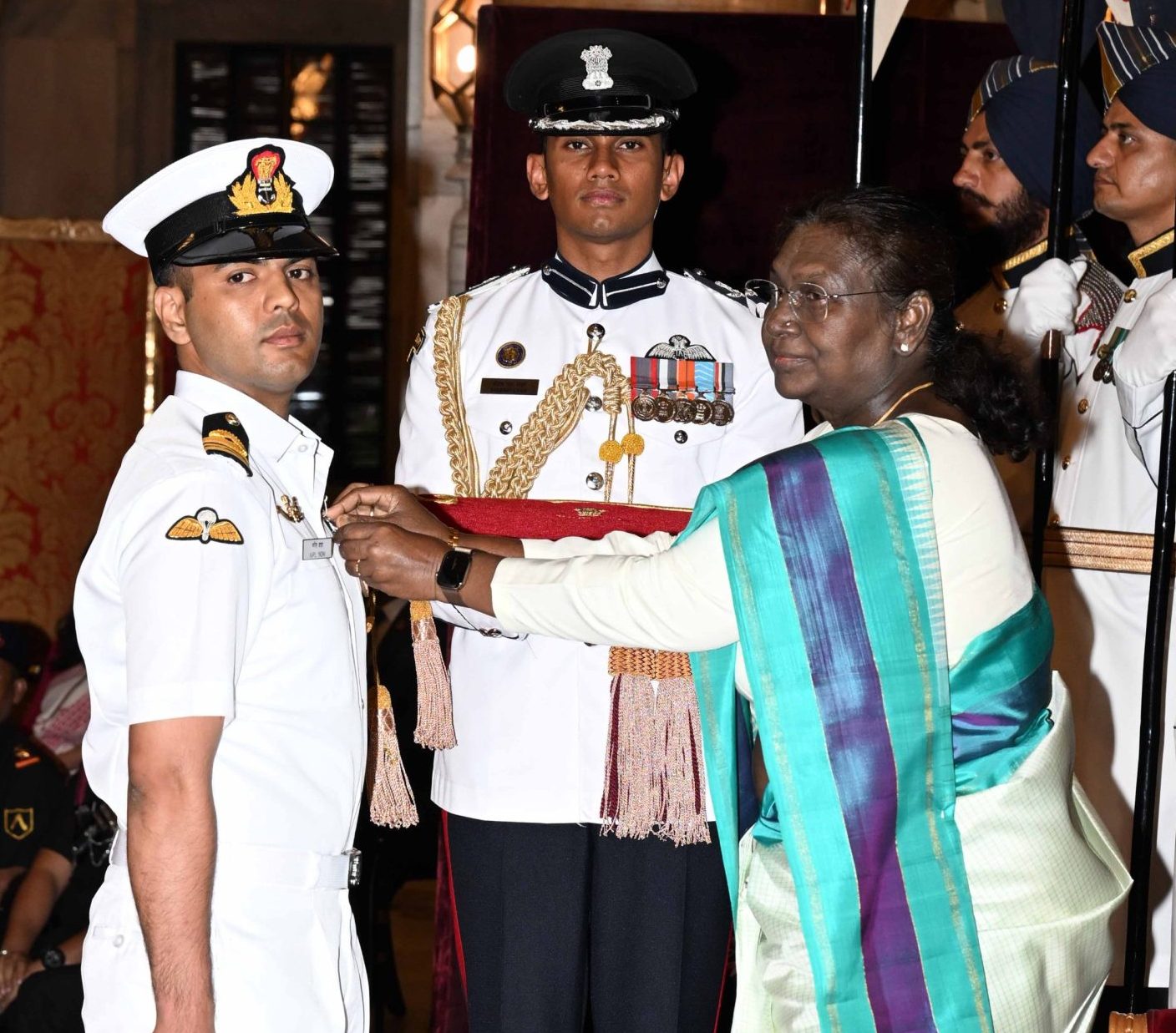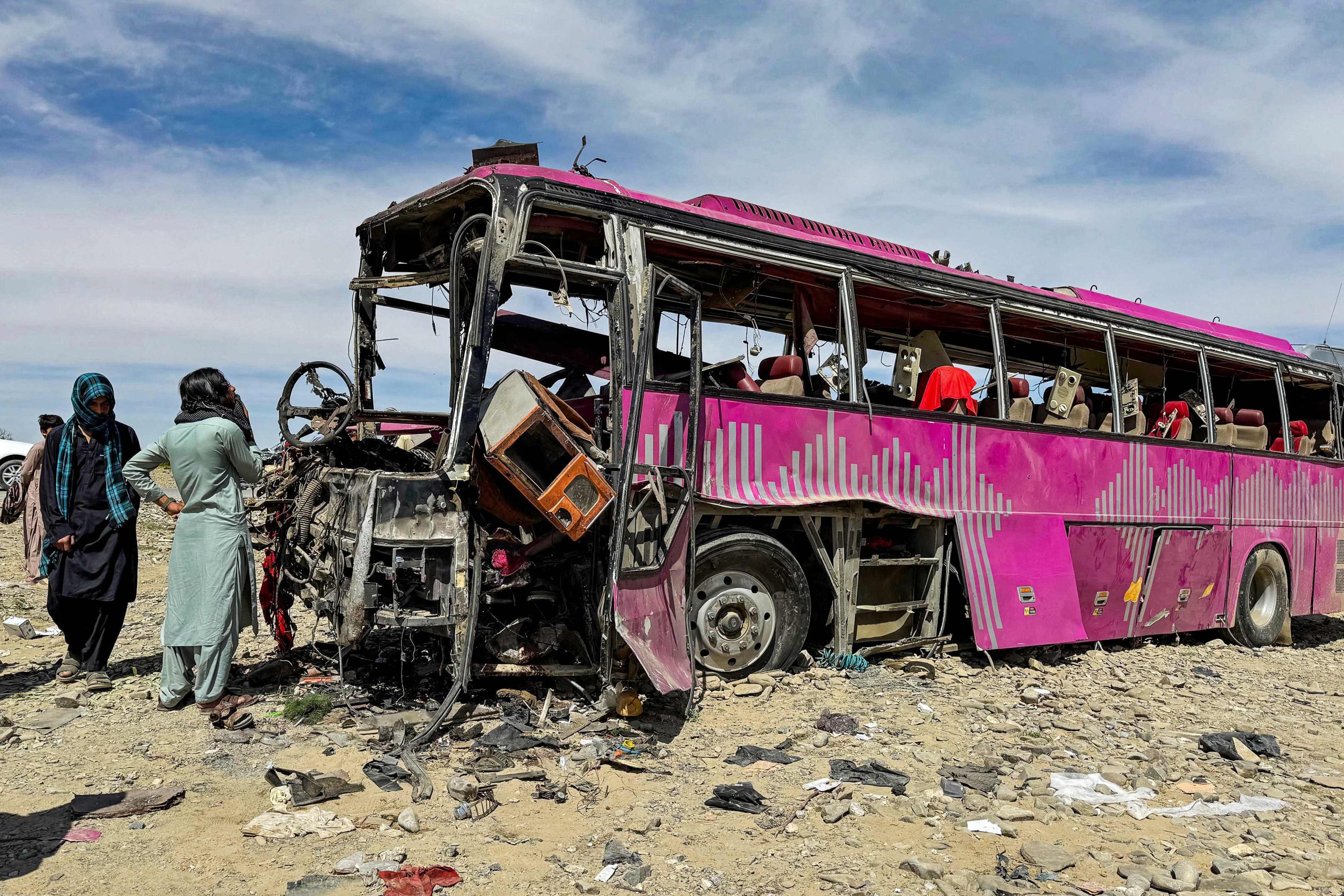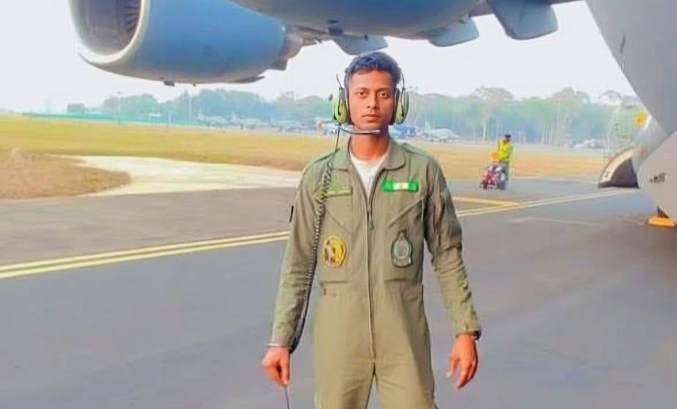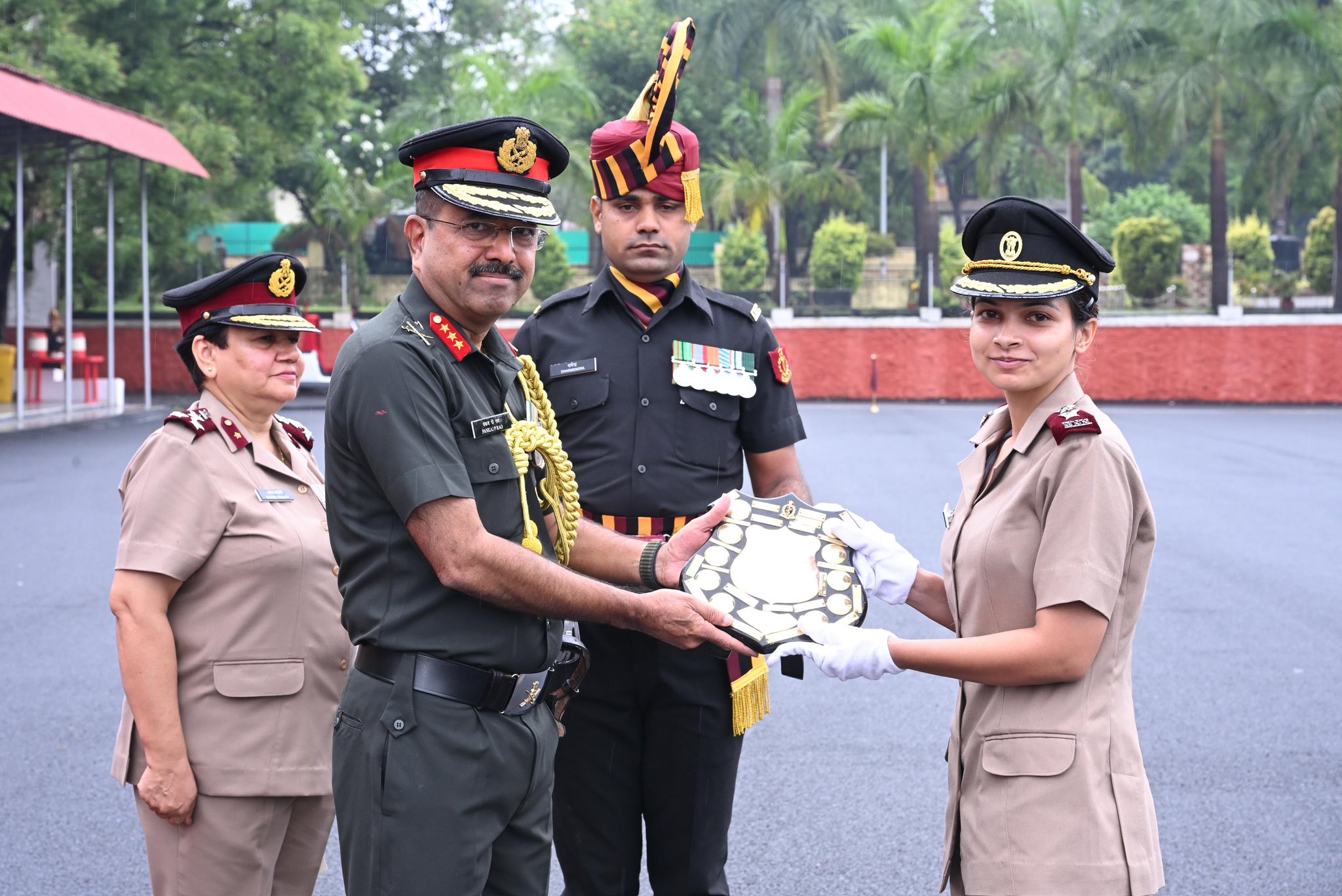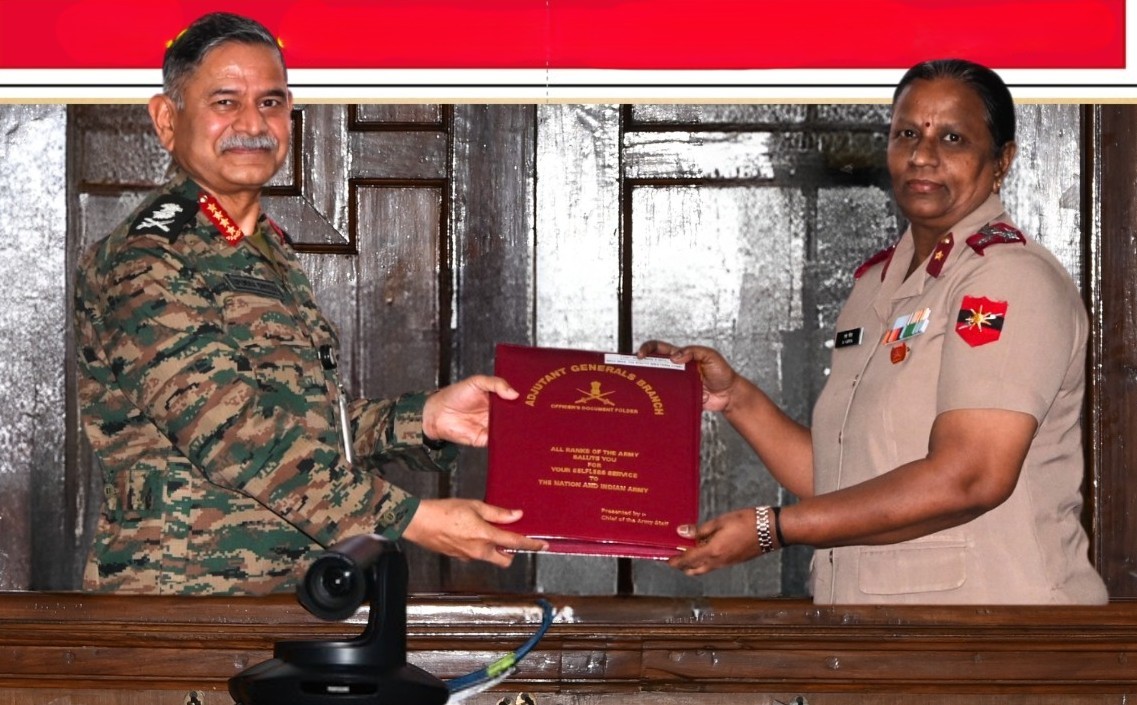Wing Commander Vernon Keane Awarded Shaurya Chakra for Averting Mid-Air Disaster
Wing Commander Vernon Desmond Keane of the Indian Air Force was conferred the Shaurya Chakra by President Droupadi Murmu during…
Lt Cdr Kapil Yadav Honoured with Shaurya Chakra for Heroic Red Sea Rescue
In a solemn ceremony held at Rashtrapati Bhavan, President Droupadi Murmu conferred the prestigious Shaurya Chakra on Lieutenant Commander Kapil…
Explosions Hit Pakistani Military Convoy in Balochistan’s Kalat District
In a significant escalation of ongoing insurgent violence, two explosions targeted a Pakistani military convoy in the Mangocher area of…
IAF Jawan Kunal Kumar Dies While Getting Off a Moving Train in Bihar
In a tragic incident, Indian Air Force (IAF) jawan Kunal Kumar, 27, died after falling from a moving train at…
41 Nursing Cadets Commissioned as Lieutenants in 55th Commissioning Ceremony at AFMC Pune
In a momentous ceremony held at the Armed Forces Medical College (AFMC) in Pune, 41 nursing cadets were commissioned as…
Indian Army Honours Retiring Officers at 144th Seminar in New Delhi
The Indian Army hosted its 144th Retiring Officers' Seminar (ROS) on May 23, 2025, in New Delhi to honour officers…

